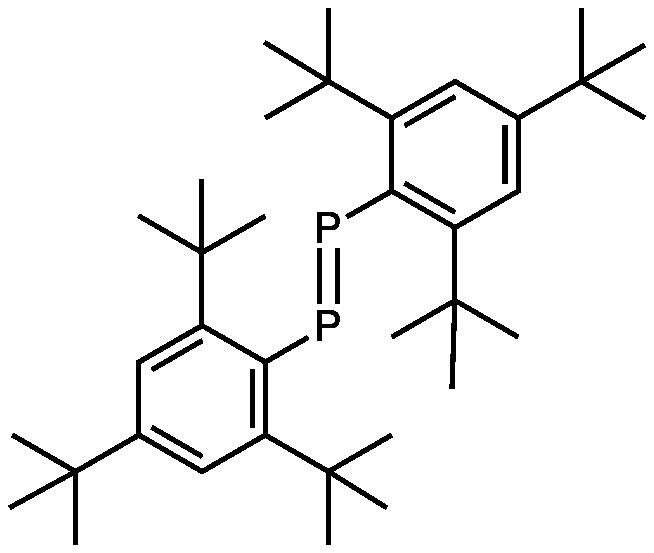 | ||
In chemistry, a diphosphene is an organophosphorus compound that has a phosphorus-phosphorus double bond, denoted by R-P=P-R'. These compounds are not common but are of theoretical interest. Normally, compounds with the empirical formula RP exist as rings. However, when the organic substituent is very large, the diphosphene becomes stable. The parent compound, called diphosphene (diphosphaethylene), has the formula P2H2, but is not stable near room temperature.
Synthesis and structure
In 1887, H. Köhler and A. Michaelis reported the isolation of a compound that was thought to be the phosphorus analogue of azobenzene, (PhN=NPh), but it later turned out that their product was the cyclic pentamer with P-P single bonds. Transition metal complexes formally containing "diphosphene ligands" are known, but such compounds do not dissociate into and are rarely made from true diphosphenes.
In 1981, Masaaki Yoshifuji and coworkers reported the first stable diphosphene, Bis(2,4,6-Tri-Tert-Butylphenyl)Diphosphene (sometimes abbreviated as Mes*P=PMes*),which is stabilized by very bulky substituents attached to the phosphorus centers. The orange solid is generated by a Wurtz-like coupling reaction:
2 (t-Bu)3C6H2PCl2 + 2 Mg → [(t-Bu)3C6H2P]2 + 2 MgCl2 (t-Bu = (CH3)3C)Several other diphosphenes have since been characterized, all featuring large organic substituents.
Diphosphenes have trans structures, in which the C-P-P angles deviate from 90° due to steric repulsion between the bulky organic substituents. The P-P distances range from 195.4 to 204.4 pm (1.954 to 2.044 Å), about 10% shorter than typical P-P single bond length of 222 pm.
